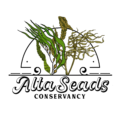Programs
AltaSeads Conservancy’s work encompasses education and outreach, building and maintaining our kelp seed bank, selection breeding and operation of our facility.
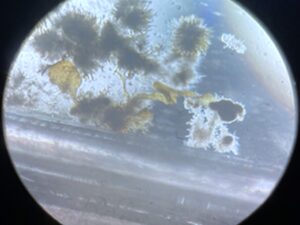 West coast seed bank originates from pioneering efforts of Michael Neushul started back in 1970s, and preserved by his later graduate student Raymong Lewis (Wheaton College). It contains half-a century old specimens of giant, bull, feather boa and other kelps, including more recent additions. The seedbanking efforts have been renewed in 2018, funded by Arpa-E and lead by the team of Filipe Alberto (University of Wisconsin, Milwaukee) and including labs in University of Santa Barbara of Dan Reed and Bob Miller, and University of Southern California Sergey Nuzhdin – this collection contains over half a thousand giant kelp natural variants. Filipe Alberto and Pete Raimondi also developed a sizable collection of bull kelp, that is kept in Aquarium of Pacific and will be mirrored by AltaSeads Conservancy. Collections in development will focus on golden kombu – Laminaria farlowii – and ribbon Alaria marginata – kelps.
West coast seed bank originates from pioneering efforts of Michael Neushul started back in 1970s, and preserved by his later graduate student Raymong Lewis (Wheaton College). It contains half-a century old specimens of giant, bull, feather boa and other kelps, including more recent additions. The seedbanking efforts have been renewed in 2018, funded by Arpa-E and lead by the team of Filipe Alberto (University of Wisconsin, Milwaukee) and including labs in University of Santa Barbara of Dan Reed and Bob Miller, and University of Southern California Sergey Nuzhdin – this collection contains over half a thousand giant kelp natural variants. Filipe Alberto and Pete Raimondi also developed a sizable collection of bull kelp, that is kept in Aquarium of Pacific and will be mirrored by AltaSeads Conservancy. Collections in development will focus on golden kombu – Laminaria farlowii – and ribbon Alaria marginata – kelps.
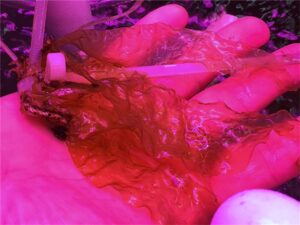 Our team genome selection expertise has been built from working with many land crops. We have collaborated with Rajinder Singh of Malaysian Oil Palm Board on hybrids of American and African oil palms. We were led by Douglas Cook of University of California at Davis in sampling wild chickpea biodiversity in fertile crescent, and interbreeding these natural genotypes with varieties of chickpea cultivated worldwide. Jointly with Maria Samsonova group from Sant Petersburg State Polytechnic University, we have led the scientists of Vavilov Institute of Plant Resources – the oldest seed bank in existence – in utilizing genomics tools in uncovering potential of ancient crops: sunflower, mung bean, and soy. Moving to macroalgae, we have been much impressed by peculiarities of their reproduction system that has a strong potential to accelerate breeding, and to make farming environmentally friendly – by relying on naturally seedless varieties.
Our team genome selection expertise has been built from working with many land crops. We have collaborated with Rajinder Singh of Malaysian Oil Palm Board on hybrids of American and African oil palms. We were led by Douglas Cook of University of California at Davis in sampling wild chickpea biodiversity in fertile crescent, and interbreeding these natural genotypes with varieties of chickpea cultivated worldwide. Jointly with Maria Samsonova group from Sant Petersburg State Polytechnic University, we have led the scientists of Vavilov Institute of Plant Resources – the oldest seed bank in existence – in utilizing genomics tools in uncovering potential of ancient crops: sunflower, mung bean, and soy. Moving to macroalgae, we have been much impressed by peculiarities of their reproduction system that has a strong potential to accelerate breeding, and to make farming environmentally friendly – by relying on naturally seedless varieties.
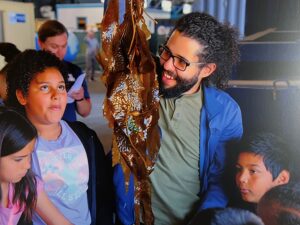
Much of current education is confined to the classroom and based on staring at computer screens (like you are doing now). AltaSeads believes that education shall be active, by seeing how kelps grow at our “research and education barge”, setting crosses of different races and species in our lab, and – yes – cleaning tanks in our aquaculture systems to make sure kelp grows well. We collaborate with education programs lead by AltaSea and take our trainees to an offshore aquaculture farm run by our partner Pacific6. With this practical angle, modern analysis of natural variation is heavily model- and computation- based; our practices combine geospatial analysis, population genetics, quantitative genetics, machine learning – all based on big environmental, phenotypic, and genomic data. We welcome trainees of all ages and science sophistication, as long as they are ready to get their hands wet, in addition to their minds open to challenge.
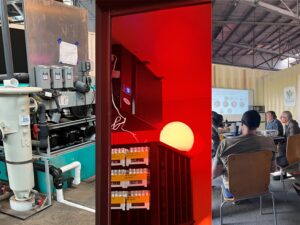 Uncategorized donations are very valuable because they are used to support everyday tasks of our staff, maintaining and operating of our equipment, covering fees for our grounds and utilities.
Uncategorized donations are very valuable because they are used to support everyday tasks of our staff, maintaining and operating of our equipment, covering fees for our grounds and utilities.
Seed Bank
Seed banking is not only a storage of seeds: it is a set of procedures to ensure a target specie successful life cycle with producing a new generation seeds in order to preserve genetic diversity. In our seedbank we curate four species of kelps that will be used for farming, research and education.
Selection Breeding
We use selection breeding to produce kelps with desired properties, such as heat resistance. This will facilitate, for example, restoration of historic kelp beds that have been lost to heat waves. We can also make selections for sterile varieties of kelp, that will prohibit gene flow from economically desirable but non-native species.
Outreach and Education
We enjoy having K12 students on our grounds. We host visitors interested in our facility, aquaculture and marine science in general, specifics of our circulation systems, or just want ho hold an urchin in their hands. We also develop summer class curriculum. We especially welcome scholars from local underprivileged communities.
Operations
Our facility includes two custom made aquaculture systems, three water tables, a laboratory with walk-in cooling chambers, an office, and a classroom space. The aquaculture systems circulate 5000 gallons of filtered seawater a day without discharge, and it is operated with powerful water and air pumps and equipped with a water storage tank, filters and UV lamps.
“Our seed bank serves a dual role in preserving ocean biodiversity ex situ for restoration work, and as a foundation for kelp crop development. Kelp farming in the USA is limited to native, unimproved varieties in their natural range sampled from natural populations. It is our hypothesis that genomics breeding and multi-trait optimization will develop ocean crops competitive with land crops for production costs and nutrition benefits. This will enable profitable and sustainable kelp cultivation in nearshore coastal environments and the USA EEZ..”
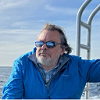
Dr. Sergey Nuzhdin
